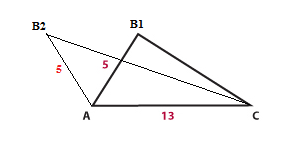Events & Promotions
|
|

GMAT Club Daily Prep
Thank you for using the timer - this advanced tool can estimate your performance and suggest more practice questions. We have subscribed you to Daily Prep Questions via email.
Customized
for You
Track
Your Progress
Practice
Pays
Not interested in getting valuable practice questions and articles delivered to your email? No problem, unsubscribe here.
- Nov 20
07:30 AM PST
-08:30 AM PST
Learn what truly sets the UC Riverside MBA apart and how it helps in your professional growth - Nov 20
01:30 PM EST
-02:30 PM IST
Learn how Kamakshi achieved a GMAT 675 with an impressive 96th %ile in Data Insights. Discover the unique methods and exam strategies that helped her excel in DI along with other sections for a balanced and high score. - Nov 19
12:30 PM EST
-01:30 PM EST
Learn how Keshav, a Chartered Accountant, scored an impressive 705 on GMAT in just 30 days with GMATWhiz's expert guidance. In this video, he shares preparation tips and strategies that worked for him, including the mock, time management, and more - Nov 22
11:00 AM IST
-01:00 PM IST
Do RC/MSR passages scare you? e-GMAT is conducting a masterclass to help you learn – Learn effective reading strategies Tackle difficult RC & MSR with confidence Excel in timed test environment - Nov 23
11:00 AM IST
-01:00 PM IST
Attend this free GMAT Algebra Webinar and learn how to master the most challenging Inequalities and Absolute Value problems with ease. - Nov 24
07:00 PM PST
-08:00 PM PST
Full-length FE mock with insightful analytics, weakness diagnosis, and video explanations! - Nov 25
10:00 AM EST
-11:00 AM EST
Prefer video-based learning? The Target Test Prep OnDemand course is a one-of-a-kind video masterclass featuring 400 hours of lecture-style teaching by Scott Woodbury-Stewart, founder of Target Test Prep and one of the most accomplished GMAT instructors.
Originally posted by GMAT TIGER on 08 May 2008, 21:28.
Last edited by Bunuel on 09 Oct 2019, 21:23, edited 3 times in total.
Last edited by Bunuel on 09 Oct 2019, 21:23, edited 3 times in total.
Edited the question and added the OA.
Kudos
Bookmarks
A
Be sure to select an answer first to save it in the Error Log before revealing the correct answer (OA)!
Difficulty:
 55%
(hard)
55%
(hard)
Question Stats:
51% (01:09) correct 49%
(01:08)
wrong
49%
(01:08)
wrong  based on 1374
sessions
based on 1374
sessions
History
Date
Time
Result
Not Attempted Yet
What is the length of segment BC?
(1) Angle ABC is 90 degrees.
(2) The area of the triangle is 30.
Attachment:
Triangle.jpg [ 28.62 KiB | Viewed 55719 times ]
Kudos
Bookmarks
Responding to a pm.
What is the length of segment BC?

(1) Angle ABC is 90 degrees.
From this, we can derive that \(BC=\sqrt{13^2-5^2}\). Sufficient.
(2) The area of the triangle is 30.
Consider the diagram below:

Notice that segment \(AB_2\) is the mirror reflection of segment \(AB_1\) around the vertical line passing through point A. Now, if the height of triangles \(ACB_1\) and \(ACB_2\) is \(\frac{60}{13}\), then the area of both triangles is \(area=\frac{1}{2}baseheight=\frac{1}{2}13\frac{60}{13}=30\). So, as you can see, we can have different lengths of segment CB (\(CB_1\) and \(CB_2\)). Not sufficient.
Answer: A.
Hope it's clear.

ABC.png [ 6.06 KiB | Viewed 38711 times ]
What is the length of segment BC?
(1) Angle ABC is 90 degrees.
From this, we can derive that \(BC=\sqrt{13^2-5^2}\). Sufficient.
(2) The area of the triangle is 30.
Consider the diagram below:
Notice that segment \(AB_2\) is the mirror reflection of segment \(AB_1\) around the vertical line passing through point A. Now, if the height of triangles \(ACB_1\) and \(ACB_2\) is \(\frac{60}{13}\), then the area of both triangles is \(area=\frac{1}{2}baseheight=\frac{1}{2}13\frac{60}{13}=30\). So, as you can see, we can have different lengths of segment CB (\(CB_1\) and \(CB_2\)). Not sufficient.
Answer: A.
Hope it's clear.
Attachment:
ABC.png [ 6.06 KiB | Viewed 38711 times ]
Kudos
Bookmarks
Hi all!
My 2 cents....
Let imagine AB and AC as sticks bounded in point A by a hinge. So, we can move AB relatively to AC and change angle BAC form 0 to 180. The area of ABC triangle will change form 0 (angle BAC=0) through maximum value 12*5*13=32.5 (angle BAC=90) to 0 (angle BAC=180). If you imagine that, It will be obvious that for 0<area<32.5 we will get two possible value of BC and for area=32.5 we will get only one value of BC. In our case area=30<32.5. Therefore, the second condition is insufficient.
My 2 cents....
Let imagine AB and AC as sticks bounded in point A by a hinge. So, we can move AB relatively to AC and change angle BAC form 0 to 180. The area of ABC triangle will change form 0 (angle BAC=0) through maximum value 12*5*13=32.5 (angle BAC=90) to 0 (angle BAC=180). If you imagine that, It will be obvious that for 0<area<32.5 we will get two possible value of BC and for area=32.5 we will get only one value of BC. In our case area=30<32.5. Therefore, the second condition is insufficient.















